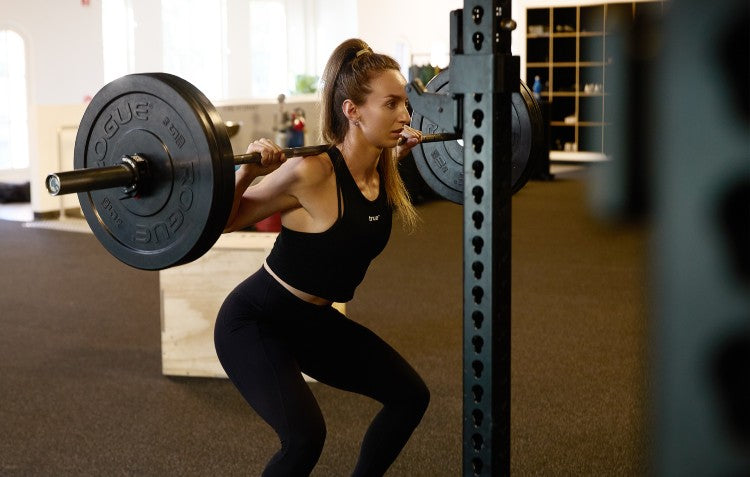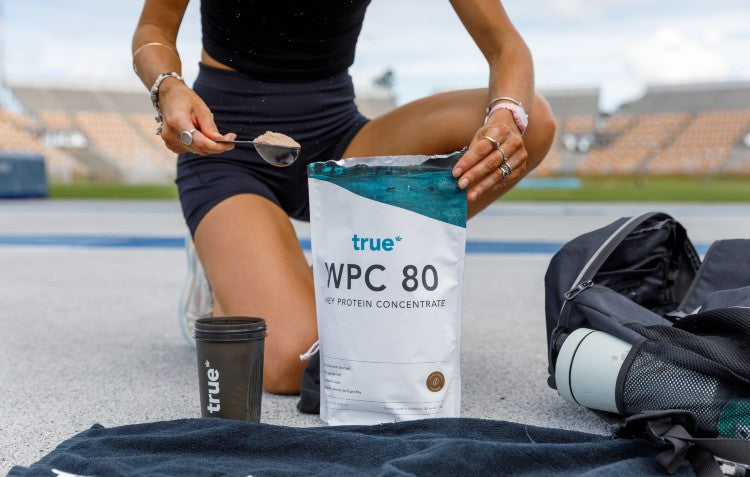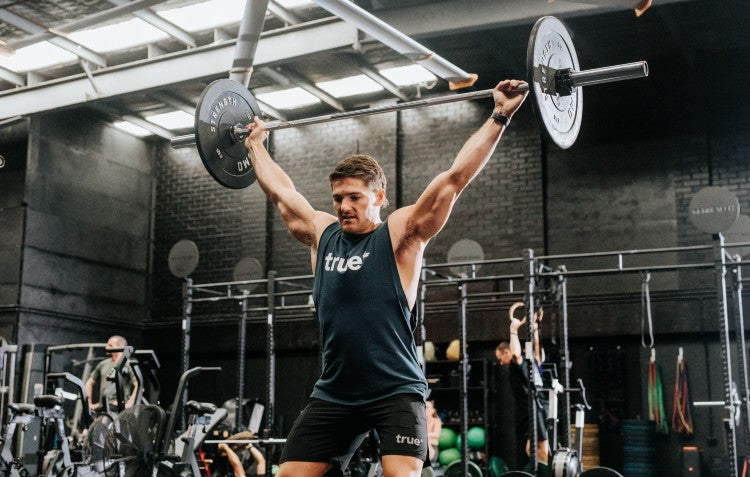If you’ve ever set a health goal, chances are you’ve used the term "toning up." It’s one of the most common aspirations we hear from Australians starting their wellness journey. It conjures images of a firm, defined physique—not necessarily bulky, but lean and strong. But what if we told you that the concept of "toning" a muscle is one of the biggest myths in the fitness industry?
The simple truth is this: the defined, "toned" look you're chasing is the result of a two-part process: building lean muscle and reducing the layer of body fat that covers it. You cannot "tone" a muscle in isolation.
Understanding this distinction is the key to unlocking real results and training with purpose. Let's break down the science, bust the myths, and give you a clear, effective plan to achieve your goals.
Key Takeaways
-
"Toning" Isn't a Physiological Process: The term "toning" describes the appearance of visible muscle definition. It is not a specific type of exercise or a way that muscles change.
-
It's a Two-Part Formula: A "toned" look is achieved by 1) increasing muscle size (hypertrophy) through resistance training, and 2) reducing overall body fat to reveal that muscle.
-
Resistance Training is Essential: To build the lean muscle required for a defined physique, you need to challenge your muscles with resistance training.
-
Women Won't Get "Bulky" by Accident: Due to hormonal differences, particularly lower testosterone levels, women do not build large, bulky muscle mass from typical strength training. Lifting challenging weights will lead to a stronger, leaner, and more "toned" appearance.
-
Protein is Your Essential Partner: Adequate protein intake is non-negotiable for repairing and building the lean muscle that creates definition.
What Does "Toning Up" Actually Mean?
When people say they want to "tone up," they’re usually describing a cosmetic goal. They want their muscles to feel firmer and to see more shape and definition, particularly in areas like the arms, stomach, and legs.
Scientifically, this look comes from two key factors:
-
Healthy Muscle Tonus: This refers to the continuous, passive state of partial contraction in a healthy muscle. When your muscles are strong and regularly engaged through exercise, their resting tone improves, making them feel firmer.
-
Low Body Fat Percentage: This is the most critical factor. You can have strong, well-developed muscles, but if they are covered by a significant layer of subcutaneous fat, you simply won’t see their definition.
So, the goal isn't to "tone" the muscle; it's to build the muscle and then reveal it.
What is Building Muscle (Hypertrophy)?
This brings us to the other side of the equation: building muscle. The scientific term for this is muscle hypertrophy, which simply means an increase in the size of your muscle cells.
This process is triggered by a specific stimulus: resistance training. When you lift weights or perform exercises that challenge your muscles, you create microscopic tears in the muscle fibres. Your body’s natural recovery process then gets to work. It repairs these tiny tears, but it doesn’t just patch them up; it rebuilds them slightly thicker and stronger than before to better handle that stress in the future.
This repair and growth process is where nutrition, especially protein, plays the leading role. The amino acids from protein are the fundamental building blocks your body uses for this essential repair work. This is precisely why a readily available source of complete protein is so valuable. Whether it's a fast-absorbing whey protein like True WPI90 to kickstart recovery immediately after a workout, or a premium plant-based option like our True Plant Protein, ensuring your body has these building blocks is fundamental to seeing results.
The Two-Part Formula for a "Toned" Body
Let's put it all together. To achieve the defined physique you want, you must focus on two separate but equally important goals.
1. Build Lean Muscle Through Resistance Training
This is the foundation. Building a base of lean muscle is what provides the shape and firmness you’re looking for. Think of it like this: without muscle, there's nothing to reveal. You need to give your body the "sculpture" before you can show it off. This is achieved by consistently challenging your muscles, encouraging them to adapt and grow stronger.
2. Reduce Overall Body Fat Through Nutrition and Activity
This is the "revealing" phase. Reducing your overall body fat percentage allows the shape and definition of the underlying muscle to become visible. This is primarily achieved by maintaining a slight calorie deficit, meaning you use slightly more energy than you consume. A balanced diet rich in whole foods and, crucially, high in protein, will help you lose fat while preserving the lean muscle you're building.
Fitness Myths We Need to Leave Behind
The misunderstanding around "toning" has led to some persistent myths that hold people back from achieving their goals.
-
Myth 1: "Lifting heavy weights will make me look bulky." This is a common concern, especially for women. The reality is that building a "bulky" physique requires a very specific and intense combination of training, a significant calorie surplus, and hormonal support (namely, high levels of testosterone) that most people, especially women, do not naturally have. For women, lifting challenging weights is the most effective path to developing the lean, defined, and strong physique often described as "toned."
-
Myth 2: "I should do high reps with light weights to tone." While high-rep training has its place for muscular endurance, it's not the most efficient way to build muscle. To stimulate hypertrophy, you need to apply what's known as progressive overload—gradually increasing the demand on your muscles. Research, including a landmark study published in the Journal of Strength and Conditioning Research, shows that muscle growth can be achieved with both high and low loads, but only if you train close to muscular failure. Heavier, more challenging weights in a moderate rep range (e.g., 6-12 reps) are often a more efficient stimulus for building the muscle that creates definition. [1]
-
Myth 3: "I can do crunches to tone my stomach." This is the myth of "spot reduction." You cannot choose where your body loses fat from. Doing hundreds of crunches will strengthen your abdominal muscles, but it won't burn the layer of fat covering them. To reveal your abs, you need to reduce your overall body fat through a comprehensive approach to nutrition and exercise. [2]
Your Action Plan for Achieving Definition
Ready to stop "toning" and start training with purpose? Here’s how.
-
Prioritise Compound Resistance Exercises: Focus your workouts on compound movements that engage multiple muscle groups at once. These are highly efficient for building overall strength and muscle. Include exercises like:
-
Squats
-
Deadlifts
-
Push-ups (or knee push-ups)
-
Overhead Press
-
Bent-over Rows
-
-
Focus on Progressive Overload: Aim to get a little bit stronger over time. This could mean lifting a slightly heavier weight, doing one more rep than last time, or improving your form. This is the signal your body needs to keep adapting and building muscle.
-
Fuel Your Body Intelligently: Your nutrition is the key to both revealing muscle and recovering properly. To support muscle development, active individuals should aim for 1.6–2.2 grams of protein per kilogram of body weight per day. [3] This can be challenging with whole foods alone, which is where high-quality supplements provide a significant advantage in convenience and efficiency.
-
For Post-Workout Recovery: A fast-absorbing protein is ideal. Our all-natural WPI90 is Australia’s gold standard for purity, delivering essential amino acids to your muscles when they need them most. For a plant-based alternative, our Plant Protein blend offers a complete amino acid profile from carefully sourced yellow pea, organic pumpkin, and faba bean proteins.
-
To Support Your Workouts: To ensure you have the energy and focus to tackle challenging workouts and achieve progressive overload, a clean pre-workout like True PRE or Non Stim PRE can make all the difference. It's formulated to enhance performance without the unnecessary or artificial fillers.
-
For Overall Joint & Tissue Support: Remember that resistance training also puts stress on your connective tissues. Supplementing with True Collagen can help support the health of your joints, hair, skin, and nails, providing a holistic foundation for your training goals.
-
From "Toning" to Training with Purpose
Let's retire the word "tone" from our fitness vocabulary and replace it with more accurate and empowering goals: getting stronger and building a body that feels as good as it looks.
The defined physique you want is not achieved with endless reps of light weights. It's built with intentional strength training and revealed with smart nutrition. Embrace the challenge, fuel your body correctly, and you'll build a level of strength and confidence that goes far beyond just "toning up."
References
[1] Schoenfeld, B. J., Grgic, J., Ogborn, D., & Krieger, J. W. (2017). Strength and Hypertrophy Adaptations Between Low- vs. High-Load Resistance Training: A Systematic Review and Meta-analysis. Journal of Strength and Conditioning Research, 31(12), 3508–3523.
[2] Vispute, S. S., Smith, J. D., LeCheminant, J. D., & Hurley, K. S. (2011). The effect of abdominal exercise on abdominal fat. Journal of Strength and Conditioning Research, 25(9), 2559–2564.
[3] Jäger, R., Kerksick, C. M., Campbell, B. I., et al. (2017). International Society of Sports Nutrition Position Stand: protein and exercise. Journal of the International Society of Sports Nutrition, 14, 20.








